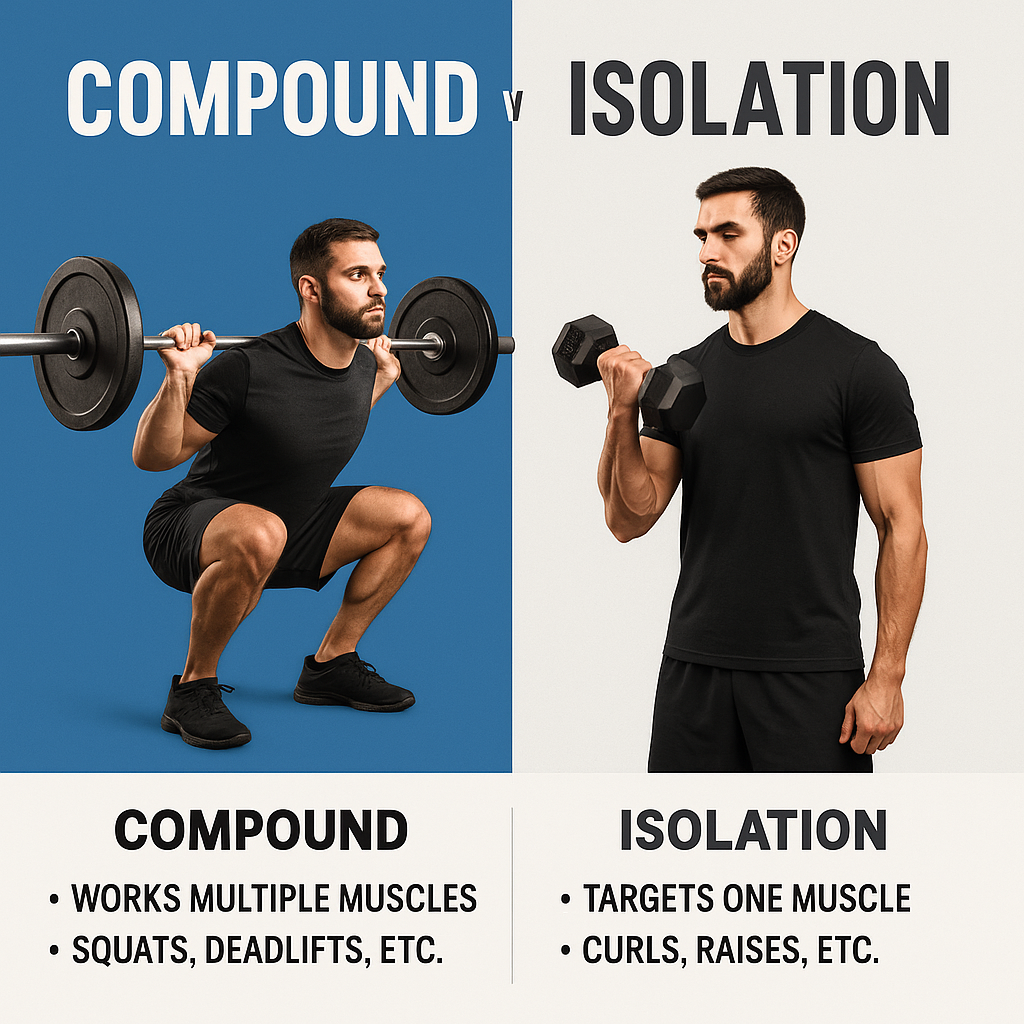
Compound vs. Isolation Exercises
2024-07-08
Category: Training
If you’ve ever wondered why squats feel so taxing or why curls give you that satisfying bicep pump, you’re tapping into the fundamental distinction between compound and isolation exercises. Both are valuable tools in a lifter’s toolkit—but they serve different purposes. Knowing when and how to use them can take your training (and gains) to the next level.
What Are Compound Exercises?
Compound exercises work multiple muscle groups and joints simultaneously. Think big lifts: squats, deadlifts, bench press, overhead press, and pull-ups. These movements engage several muscles at once, making them efficient and ideal for strength and size.
Benefits of Compound Exercises:
- Efficiency: Hit multiple muscle groups in one lift.
- Strength Gains: Stimulate more muscle fibers and nervous system adaptation.
- Real-World Transfer: Mimic functional movement patterns used in daily life and sports.
- Hormonal Boost: Trigger higher testosterone and growth hormone response.
What Are Isolation Exercises?
Isolation exercises focus on a single joint and muscle group. Examples include bicep curls, leg extensions, lateral raises, and calf raises. These movements are excellent for targeting specific muscles and improving muscle symmetry or fixing lagging areas.
Benefits of Isolation Exercises:
- Precision: Great for sculpting and hypertrophy.
- Injury Recovery: Helpful in rehabilitation or correcting imbalances.
- Lagging Muscles: Brings up weak points that compound lifts might miss.
When to Use Each Type
Here’s how to use compound and isolation exercises in your programming:
- Start with Compound Movements: They require the most energy and coordination. Do these early in your workout.
- Use Isolation for Finishers: Add curls, lateral raises, or tricep extensions to exhaust specific muscles.
- Program by Goal: Want overall strength and mass? Go compound-heavy. Want sculpted definition? Include isolation work.
Sample Routine: Push Day Example
- Barbell Bench Press (compound)
- Overhead Press (compound)
- Dumbbell Flyes (isolation)
- Lateral Raises (isolation)
- Tricep Pushdowns (isolation)
Tracking & Progression
Compound lifts should be tracked carefully with progressive overload. Isolation exercises can be varied more freely, but still benefit from logging sets and reps. Use the FitGitt App to track both and see how your split impacts your growth.
Final Thoughts
Don’t fall into the trap of choosing one over the other. The best results come from combining compound movements for overall development with isolation exercises to refine, balance, and strengthen specific areas.
Train smart and use the full range of tools available. For personalized training templates and pro tips, check out FitGitt.com.